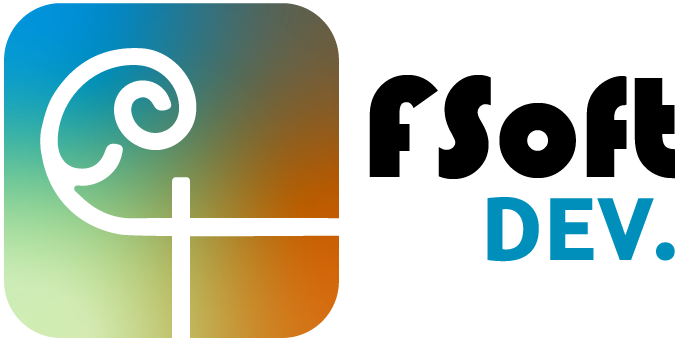introduction
In today’s digital-first business landscape, security is no longer optional—it is a strategic necessity. Vulnerabilities such as SQL Injection, Cross-Site Scripting (XSS), and Cross-Site Request Forgery (CSRF) are not just technical issues but direct threats to customer data and brand reputation.
This is where Secure Development (SDLC) comes in, embedding cybersecurity practices throughout the software development lifecycle.
Why Businesses Need Secure Development
-
Protect Brand Reputation: Any security breach can damage trust with customers and partners.
-
Regulatory Compliance: Laws like GDPR, NCA-CSCC, and CCPA impose strict data protection requirements.
-
Cost Efficiency: Fixing vulnerabilities post-production costs far more than addressing them during development.
-
Competitive Advantage: Secure applications increase market trust, supporting growth and global expansion.
OWASP: The Global Standard for Secure Software
What is OWASP?
OWASP (Open Web Application Security Project) is more than a list of vulnerabilities. It is a global framework that provides:
-
OWASP Top 10: The most critical web application security risks.
-
OWASP ASVS (Application Security Verification Standard): A framework for verifying application security across multiple levels.
-
OWASP SAMM (Software Assurance Maturity Model): A maturity model for evaluating and improving security practices.
OWASP Top 10 Risks and Solutions
| Risk | Description | Suggested Solutions |
|---|---|---|
| A01: Broken Access Control | Unauthorized access to sensitive data or functions. | Enforce role-based access, deny by default, test authorization. |
| A02: Cryptographic Failures | Weak or missing data encryption. | Use strong encryption (TLS, AES-256), proper key management. |
| A03: Injection | Malicious input alters queries/commands. | Use parameterized queries, input validation, ORM frameworks. |
| A04: Insecure Design | Flaws in architecture or logic. | Apply threat modeling, secure design patterns, code reviews. |
| A05: Security Misconfiguration | Unsafe default settings or missing patches. | Harden configs, automate patching, disable unused services. |
| A06: Vulnerable & Outdated Components | Using unpatched libraries or frameworks. | Regular updates, vulnerability scanning, SBOM tracking. |
| A07: Identification & Authentication Failures | Weak login, session hijacking. | MFA, secure session management, strong password policies. |
| A08: Software & Data Integrity Failures | Unverified updates, insecure CI/CD pipelines. | Code signing, integrity checks, secure DevOps practices. |
| A09: Security Logging & Monitoring Failures | Missing or ineffective detection of attacks. | Centralized logging, SIEM, active monitoring and alerting. |
| A10: Server-Side Request Forgery (SSRF) | Attackers abuse server requests to external/internal systems. | Validate URLs, enforce allowlists, limit network access. |
Key Threats from OWASP Top 10
SQL Injection
Description: Exploiting user inputs to execute malicious queries on the database.
Solution: Use Prepared Statements, ORM frameworks, and strict input validation.
XSS (Cross-Site Scripting)
Description: Injecting malicious JavaScript code into web pages.
Solution: Apply output encoding, input filtering, and enable Content Security Policy (CSP).
CSRF (Cross-Site Request Forgery)
Description: Tricking users into executing unauthorized actions while authenticated.
Solution: Use CSRF tokens and verify request origins.
How to Apply OWASP in Development
Implementation takes place at multiple levels:
-
Secure Coding: Developers follow OWASP Cheat Sheets, using parameterized queries, validation, sanitization, and output encoding.
-
Code Review + CI/CD: Integrate SAST tools (e.g., SonarQube, Checkmarx) and dependency scanners (e.g., OWASP Dependency-Check, Snyk).
-
Security Testing: Run DAST tools (e.g., OWASP ZAP, Burp Suite) and manual penetration testing.
-
Production Monitoring: Use WAFs (e.g., ModSecurity with OWASP CRS) and SIEM systems (e.g., Splunk, ELK) for real-time detection.
Practical Steps for Companies
-
Secure SDLC Integration: Security requirements from day one, with static/dynamic code analysis and penetration testing.
-
Continuous Training: Regular workshops on OWASP Top 10 and simulated attacks.
-
Adopt Secure Frameworks & Tools: Use modern frameworks (Laravel, Spring, Django) and dependency scanners.
-
Clear Governance: Defined roles between development and cybersecurity teams, with documented policies.
Strategic Recommendations for Business Leaders
-
Invest in Security as Growth: Secure development protects data and customer loyalty.
-
Adopt OWASP Standards: Make them mandatory in development contracts.
-
Ongoing Monitoring: Security is not one-time—it requires continuous updates and vigilance.
Conclusion
Secure Development is not an extra burden but a strategic enabler for business growth. By adopting OWASP standards like the Top 10, organizations ensure their applications are not only innovative and efficient but also resilient against modern cyber threats—protecting customers, data, and brand reputation.
 English
English
 العربية
العربية


Add New Comment